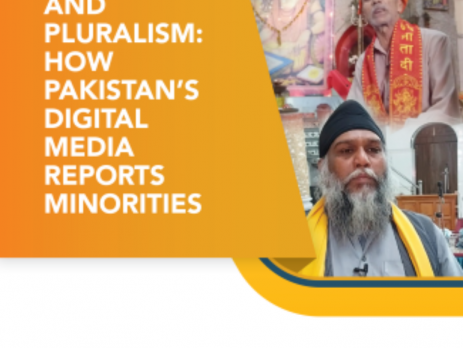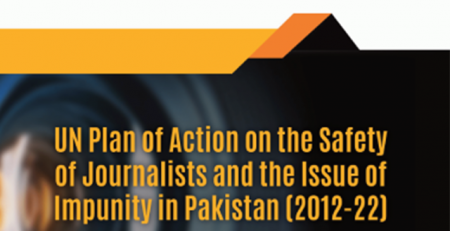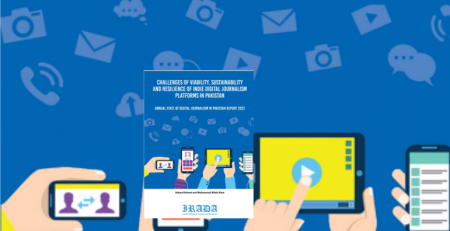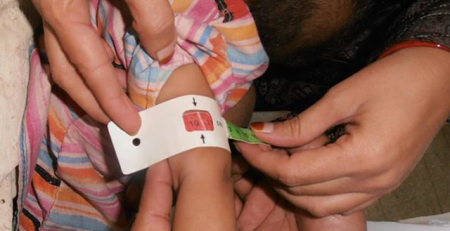In a country where the freedom of religious expression and the rights of religious minorities are denied regularly, a group of independent news websites are stemming the tide of hate with public interest journalism.
The Digital Media Alliance of Pakistan (DigiMAP), a collective of 13 online news outlets that represents the emerging ecosystem of online journalism in the country, produced over 50 news stories during 2021 to give voice to marginalized communities, especially Pakistan’s diverse religious minority groups.
An analysis of their news coverage, now published as a research report, shows that DigiMAP outperformed its legacy digital news media counterparts on almost all indicators related to public interest journalism, quality, diversity and pluralism in news reporting on the issues and rights of religious minorities.
The findings reveal that while Pakistan’s well-resourced and well-established legacy news media is unwilling or unable to supply quality journalism about marginalized groups, the relatively poorly resourced and nascent online news media is bravely attempting to revive some of Pakistan’s many pluralisms.
From the margins, for the marginalized – promoting pluralisms
The DigiMAP was formed in 2019 with support from International Media Support (IMS) through its partner Freedom Network, a media freedom watchdog that monitors journalist safety issues in Pakistan and promotes civil liberties and media professionalisms.
Within two years, the DigiMAP member news outlets have put into action their mission of practicing independent public interest journalism and representing not only the “socio-political and economically marginalized communities ignored by the mainstream media” but also “Pakistan’s demographic diversity and pluralisms – including geographic, ethnic, linguist, religious, cultural and class”.
In 2021, DigiMAP member news outlets set out to report on the delivery of rights to Pakistan’s religious minorities, with journalism support facilitated by IMS in the form of mentorship for news reporting through its partner IRADA (Institute for Research, Development and advocacy). The results are encouraging.
According to the recently published research titled “Digital Media and Diversity: How Pakistan’s Media Reports Minorities”, DigiMAP coverage of religious minorities was found to be markedly better than the coverage of legacy news websites on a set of five journalism quality indicators and six cross-cutting indicators, which measured the public interest angle, context, and diversity of human sources, among other features.
The key findings of the report, which was jointly published by IRADA, Freedom Network, and DigiMAP in December 2021, are:
- Ensuring gender representation in reporting: Over half of the 52 DigiMAP stories on religious minorities quoted women sources. DigiMAP stories featured women twice more and directly quoted women sources three times more than the comparable legacy news coverage.
- More explanatory reporting: Most of the DigiMAP content (65% of 52 news items) featured the opinions of experts to explain the issues of religious minorities. In comparison, only 44% of the legacy news website stories quoted experts.
- Providing context for issues: A majority of the DigiMAP stories (54%) included research or data to contextualize the reporting on religious minorities, compared to only 6% of legacy news stories that did the same.
- Specifying the human rights framework: Most DigiMAP stories (54%) made a reference to the 2014 landmark judgement by the Supreme Court of Pakistan on the delivery of rights to religious minorities. However, none of the legacy news media coverage on religious minorities referred to the ruling despite its significance.
- Highlighting the public interest: A majority of the DigiMAP news stories on the rights of religious minorities had a clear focus, included human sources from the religious minority communities, did not perpetuate negative stereotypes, and directly specified the public interest dimension of the issues being reported.
- Ensuring in-depth coverage: Nearly 70% of the 52 DigiMAP news stories on the rights of religious minorities displayed in-depth coverage through the use of multiple human sources compared to only 48% of legacy news coverage.
- The performance of the online news media shows that the independent, public interest journalism start-ups are keeping the hope alive for diversity and pluralism in media coverage as well as public interest journalism by telling the stories of marginalized groups effectively and ethically.
Supporting sustained public interest journalism
One of the key ingredients for the DigiMAP reporting was the mentorship support offered by IMS partner IRADA. This mentorship included help in development of story ideas, quality checks on news focus and sourcing, and editorial review before publication.
Based on this mentorship model and coverage, the research report offers the following recommendations:
- Ensure sustainability of mentorship: Journalism support organizations should continue to provide journalism fellowships and mentorship support to digital journalism platforms for inclusive news coverage.
- Capacity-building for digital journalists: Thematic reporting on the issues of marginalized communities might require investigative reporting skills and multimedia storytelling techniques, therefore training workshops can be conducted for digital journalists to improve the quality and presentation of their news content.
- Safety training to digital journalists: Digital journalists who work on stories related to religious minorities are likely to face social, political, and religious pressures during and after reporting. Therefore, it is important to equip them with holistic safety skills.
- Draft a code of ethics to guide responsible reporting about marginalized groups: A code of ethics on sensitive and professional reporting about marginalized groups, especially religious minorities, could help guide the portrayal of minorities in media.
- Encourage engagement between media and minorities: To address challenges of reporting access, engagement between minority groups and digital news platforms should be facilitated beyond news needs towards a newsroom-audience relationship. This will engender greater trust between media and religious minorities.




